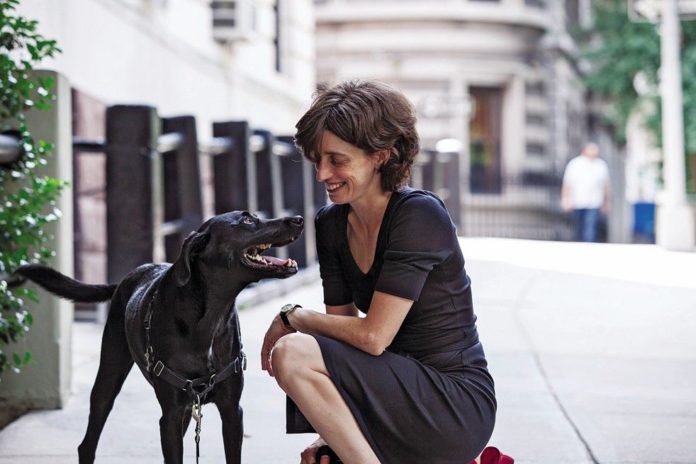Alexandra Horowitz’s best teacher had four legs and a keen, black nose. Horowitz even dedicates her new book, “Inside of a Dog,” to this teacher: a pooch named Pumpernickel.
Horowitz is an animal scientist who studies what dogs do (their behavior) and what they know (cognition). She learned about the way that dogs perceive, or understand, the world by closely watching Pumpernickel, her pet for 17 years.
Horowitz’s book is full of fascinating information about dogs. You’ll learn how dogs descended from wolves and why they gaze directly at humans. Have you ever wondered why one dog bows to another? That’s a signal that means “Let’s play!”
Growing up close to Golden, Colorado, Horowitz was surrounded by animals. She liked to watch her dog and cat, as well as the ants in her yard. On her way to school, Horowitz counted the prairie dogs in the field and listened for their calls.
She also enjoyed books with furry characters, including “Mouse Tales” by Arnold Lobel and “Old Yeller” by Fred Gipson.
“But I had no idea that you could actually study animal behavior,” Horowitz said by phone from her home in New York City. “The only animal-related job I knew was veterinarian.”
In college, Horowitz majored in philosophy, which is the study of ideas about knowledge. In graduate school, though, she wanted to study how knowledge is acquired. Horowitz soon realized that she was especially curious about how animals learn and why they behave in certain ways.
At first, she observed rhinoceroses and bonobos in a zoo, but then she realized how little she knew about her own pet. Horowitz began to take videos of Pumpernickel playing and taking walks. She watched the videos many times so she could determine exactly what her dog was doing and why. In this way, she learned more about the behavior of dogs in general.
Horowitz continues to learn from the dogs in her life. She now has two dogs named Finnegan and Upton. Observing them is giving her important information for her second book. It’s about a dog’s most important sense: the sense of smell.
“Dogs experience things very differently from humans,” Horowitz said. “We see the world, and a dog smells it.”
The noses of most dogs have at least 200 million receptor sites. Humans have only 6 million such sites.
Horowitz teaches classes in animal behavior at Barnard College in New York City. Some animal scientists focus on wild animals in the field, such as pandas and chimpanzees; others observe rats in laboratories. But Horowitz thinks we can learn a lot by studying the animals around us.
“We can think that we know a lot about an ordinary animal, like a dog or squirrel, because we see them frequently,” Horowitz said.
But to be an effective animal scientist, you must resist that idea, she said. Be open to discovery. Observe carefully. Try to experience the world as that animal does.
You can do this right now, in your home or neighborhood. You don’t need special classes or a white lab coat. “Inside of a Dog” includes activities that help you perceive the world as a dog might. For example, give a good sniff to every object you come across. Or try walking on your hands and knees. What do you notice when you’re about the height of a dog?
Bow-wow-WOW! You’re seeing the world in whole new canine kind of way.







